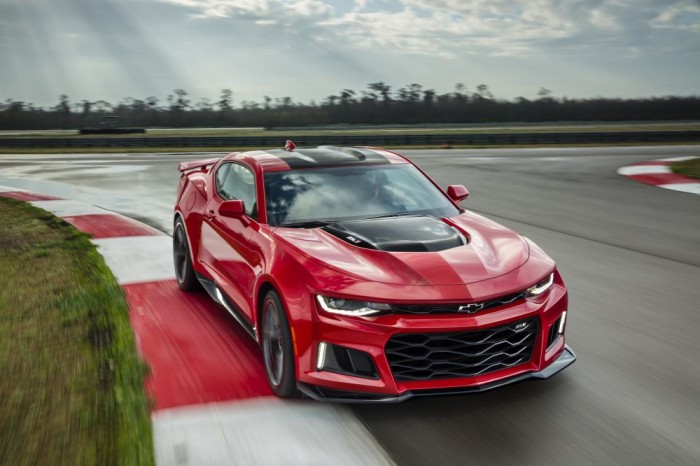When you think muscle cars, you don’t think of outright speed. Let’s face it, the boxy bodies of the old guard of muscle cars wouldn’t let them get up much past 155 mph because of drag. Some special models could go faster, but none of them from factory, that were mass produced that is, could quite compete at the top end.
Muscle cars still are a bit bulbous and heavy, but thinking of them as anything bug drag strip queens is foolish. The Camaro is a great example of this. When we tested a 2016 Camaro, although it was only the 4 liter turbo engine, was decently quick, but it handled beautifully. Clearly this generation of Camaro is something special. Now, Chevy has made it even moreso. The ZL1 is the top of the line Camaro at this point until the Z/28 is bestowed upon us. And we just got a glimpse as to how fast thing thing, which destroyed the Nurburgring, will go.
How does 198 grab ya?
While the ZL1’s official top speed misses the magic 200 mark, it did peak at 202.3 mph in one direction. Top speed runs take the average of two runs in opposite directions, to account for variables like wind and track surface. The ZL1’s other run of 193.3 mph brought the overall average down. The Papenburg high-speed oval has 2.5-mile straights with 1.3-mile turns with a 49.7 degree banking. Chevrolet says the steep banking allowed the drivers to push flat out for the entire run.
For reference in American-car bench racing, the Dodge Charger Hellcat has a claimed top speed of 204 mph. The Chevrolet Corvette Z06 tops out at 198 mph. The previous 2009 – 2013 Corvette ZR1 could hit 205 mph, according to Chevy.
The important thing to note there is the Z06. When testing at Hennessey Performance, their Z06 runs only hit 186. Why? Because of drag. With the Camaro being much slipperier in the air, it has a speed superiority to the ‘Vette. The Z06 will be faster around a track, but the ZL1 would win in an infinite drag race.
Humble muscle cars have come a long way haven’t they?
(Source: Autoblog)





Leave a reply